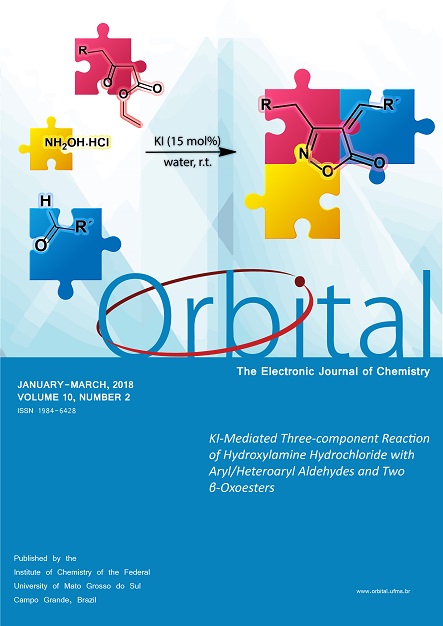Investigations of the Bridged Thiophene Derivative Effect on the Performance of N,N-diethylaniline-based Compounds for Organic Photovoltaic Cells
- DFT calculations,
- N,N-diethylaniline-based compounds,
- optoelectronic properties,
- organic solar cell
Copyright (c) 2018 Orbital: The Electronic Journal of Chemistry

This work is licensed under a Creative Commons Attribution-NonCommercial-NoDerivatives 4.0 International License.
Abstract
In this work, we study eight novel organic donor–π–acceptor dyes (Pi (i=1-8)), used for dye sensitized solar cells (DSSCs). The designed dyes are differentiated by the nature of the π-bridge linked the electron donor group N,N-diethylaniline and the acceptor cyanoacrylic acid group. In this study Density Functional Theory (DFT) and its extensible Time Dependent DFT (TDDFT) approaches have been used to shed light on how the π-conjugation order influence the performance of the dyes in the DSSCs. The HOMO, LUMO and Gap energy of these compounds have been calculated and reported in this paper. Our aim is to explore their electronic and optoelectronic properties based on the DFT quantum chemical calculations. Also, we were interested to elucidate the parameters that influence the photovoltaic efficiency toward better understanding of the structure–property relationships. The study of the electronic and optical properties of these compounds could help design more efficient organic photovoltaic functional materials.


